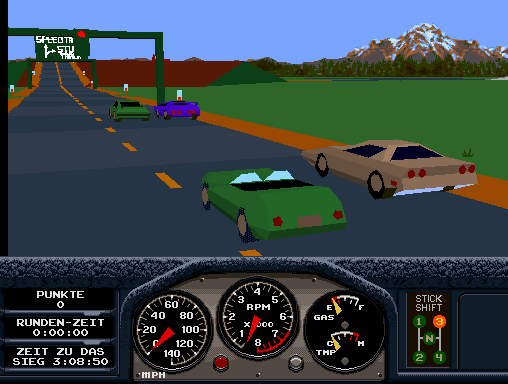Virtuality was essentially Oculus Rift only twenty+ years ago:
http://en.wikipedia.org/wiki/Virtuality_%28gaming%29
I played a sit down at Trocadero in London around 1994 and a stand up at Blackpool Pleasure Beach probably around 2001.
I'd followed the technology from design to inception (I am a geek, or was at least) and it was massively exciting.
I think the most interesting thing is that it was initially being "sold" as a system to help improve aspects of lives and stuff. They demonstrated manipulating manufacturing processes, controlling robot arms for surgery, viewing and experiencing new cars or houses without the need for a physical object.
The gaming aspect I think was the commercial arm, where they could fund the company to develop stuff that could actually have a wider impact.
It suffered from a couple of issues. The headsets (due to using CRT technology), were massively bulky. They really cut you off from the world and immersed you incredibly. The headset came over your ears and had speakers in them. So you really were cut off. However, they were very heavy. On the sit down one, I was finding neck ache after a second gaming session (the games were arcade titles which lasted a few minutes).
It... Hurts... So... Much...
It was also really low res stuff. It was advanced when it first happened, and the tech did improve, but certainly by the time I was playing the (lighter headset version) stand up game in 2001, the graphics were well behind both arcade and home console.
Yes, you looked like a twat playing it too
Part of that was the computational requirements to track all the movements. The stand up one had a gun and the system tracked your body position in the "pod", the gun position and angle and your head movements. It looked like Hard Drivin'
Yes retro gamers, I did cheat and use a Race Drivin' image
and lagged badly when you moved fast. In a world with Quake Arena and Unreal Tournament - it was pants.
It's quite sad really. You could see right from the start that they wanted something that could help improve the world, they wanted to believe that the technology was a real game changer and could be something more than a toy.
However, it was always clearly too poor quality in terms of fidelity to have a serious application. It was used as a gimmick and then just as an out of date arcade system. I don't think it was a lack of application, it was just simply an idea that was way ahead of what technology could comfortably back.
More information on what happened in the end here (the company stil lexists, but is gonig bust as we speak):
http://www.arcadianvr.com/APPLICATIONS_Training.htm
Obviously Oculus Rift has the backing of modern technology. We're at a point now where essentially there is enough redundant, cheap, CPU power to run this stuff. Now it the right time, but... Is it the right product? For gamers I'm really not sure, but has the boat gone on serious commercial applications, ruined by Virtuality? I honestly don't know, so please, I'll be interested in what you find out




